Ogilvie grain elevator Wrentham Alberta
The tiny community of Wrentham Alberta has two grain elevators, but for this report, we will for the most part focus on only one, the former Ogilvie Flour facility. A small but dedicated group, of which this author is now a member, is trying to rescue the endangered building. It’s hoped the historically significant structure can be saved in place or perhaps moved to an established railway park. Regardless of how, it’s only important that it not follow hundreds and hundreds of old style wooden grain elevators before it that have been demolished in the last couple decades. If we can stop just one from falling…
The building was constructed in 1925 for the Ogilvie Flour Mills Company. In 1960 it was purchased by the Alberta Wheat Pool (AWP), a farmer owned co-operative and traditionally the largest grain handling firm in the province. The “Pool” as it was often called, sold the building in 1968 to a local farmer. It’s still in the hands of this family.
Fast Forward to today and they no longer have use for the building. They do hope to save it, after all it’s the very last Ogilvie Flour grain elevator left standing in the province, but there are still costs and liabilities associated with it. This is sort of a double edged sword for the Kuehn family, who for over four decades and until recently has made use of the building. Paying for something you don’t really need is a burden, yet if they stop, the elevator will surely come down.
In 2012, history buffs Jason Paul Sailer and Cody Kapscos formed a charitable group, the Ogilvie Wooden Grain Elevator Society (OWGES) with the hopes of saving the structure. Ever since then have been working tirelessly towards that goal. In 2014, Connie and myself joined the group. Jim Pearson, the godfather of elevator historians is also (naturally) involved.
Initially the plans were to transport the structure to the Galt Railway Park, not terribly far away in Stirling Alberta. However, today a second option is being seriously considered. Instead of moving it, there is talk of keeping it in place and once fixed up operating it as a satellite facility. This would allow more resources to be directed towards the renovation of the building.
The interior of the elevator is for the most as built and complete and like the exterior is in overall reasonable shape. There is a lots of fliers and paperwork and other “junk” (no, treasures) lying about inside – in some ways it’s like a time capsule.
A small four cylinder engine in the office basement powers the mechanicals via a boxed in belt and pulley drive system under the office-to-elevator walkway. Almost everything is intact and for the most part functional, a bonus for the society who will not have to spend huge sums of money to bring the building to show-worthy standards. None the less a lot of work is needed – if you were 90 years old, you’d need it too.
The Ogilvie elevator has an annex which was built in the early 1950s. This sort of addition, essentially a large shed with integrated bins, was a cheap and easy way to add extra capacity as business increased. Many surviving wood-cribbed grain elevators today, it seems, have one of these ancillary structures attached to them. Most are wood, some are made of steel bins. A 1940s photo of the elevator shows a smaller annex located where the current one is.
On the elevator’s east facing wall one can see parts of a faded Ogilvie sign. The building was never repainted while under AWP ownership, which seems to suggest the company only planned to use it for a short time. Perhaps it was too small in capacity (it’s tiny), too old or just did not fit well with their plans for some reason. That a new AWP elevator was built the very year they quit using this one further reinforces that theory.
The elevator is leaning somewhat. Structurally it’s not a big worry however and it only adds character! Many old elevators have a tilt to them. You’ll notice the building is clad in metal. Some grain elevator companies did this as a fire prevention measure. External sparks or flames would have nowhere to catch. The out buildings, a biffy and place to store fuel, still stand, but barely. You rarely see these any more.
Parked on the grounds is some old farm machinery and the like. I noticed old and retired equipment tends to congregate around buildings such as this.
The rail line that passes through Wrentham is still line place (more on this further down). The elevator siding, however, was pulled up in the last few years.
On our visit we did not get the chance to go inside the building (okay, next time). Jason, a founding member of the OWGES, who accompanied us this trip, supplied some interior photos he took the year before. Allan Arconanda, a fellow enthusiast who was visiting the grain elevator with us, also contributed a photo to this article. Thanks guys, good work!
The Ogilvie Flour Mills Company was established in the 1860s and was once one of the largest firms of its type in the country. They owned a network of small-town prairie grain elevators and had large milling facilitates in major centres. In recent times they were known for their Five Roses brand of flour. Every Canadian household, it seems, had a bag of Five Roses on the shelf. They also produced cereals and other foodstuffs made from processed grains.
In addition to this grain elevator, the Ogilvie company owned many others in Alberta, around forty or so, most located in the southern part of the province. More were found in Saskatchewan and Manitoba. The company sold them all, the entire lot, in the late 1950s. Many or perhaps even all of them, at least the Alberta based ones anyway, became AWP facilities afterwards. From the date of the sale and beyond, the company ceased to source grain directly via an elevator network and instead relied on other grain handlers to do that for them.
Ogilvie as a company has not existed for a number of decades now. They got swallowed up by food giant Archer Daniels Midland in the 1990s.
Keeping this elevator company is another such structure down the tracks, which we’ll only touch on briefly. Built in 1968 for the Alberta Wheat Pool, the same year that company shut down the former Ogilvie facility as you recall, this second one is now in private hands. I believe it was shut down by the AWP (or Agricore as it was called by then) in the late 1990s. We’ll return to document it another day.
In the past there were several other grain elevators in Wrentham, built at various times. Most were torn down during the great grain elevator massacre of the mid-to-late 1990s and early 2000s. More prairie sentinels fell in that time then any other. From a peak of some seventeen hundred in the province, there is perhaps two hundred and fifty traditional wood-cribbed grain elevators remaining. Some are used by local farmers to store grain, a few are still used in the traditional sense and belong to commercial grain firms who uses them to fill railways cars. A few have been preserved and we dearly hope this one will be counted amongst those soon. Some are abandoned. Many, especially the latter, are threatened.
Wrentham is along the CPR’s moribund Stirling Subdivision, often referred to as the Manyberries branch (named after another town along the line). Built just over a century ago, the track once traveled all the way from its namesake town of Stirling to a point not terribly far from the Saskatchewan border. From there some connecting subdivisions took it well into the neighbouring province. On the west end, the line connected with the CPR’s Lethbridge to US border secondary line (Northern part Stirling Subdivision and Coutts Subdivision).
Over the years, as business declined, the Manyberries branch was cut back and today ends in Foremost, just east of Wrentham. The track is still in place but has not been used for many, many years. In places the roadbed has slumped and overall it appears in poor shape.
The CPR is trying to sell the Stirling line, and if unsuccessful, they’ll likely pull up the steel. A short line operator, Redcoat Railways, has shown interest in resurrecting the branch still remaining but so far nothing has happened. They hope to ship out grain (that’s always been the main commodity carried) and there is the possibly of petroleum products moving on the line as well. One thing is certain, if someone takes it over, they have their work cut out for them. Recall the bad infrastructure we spoke of earlier. What ever the case, we wish them luck.
This line was one of many built during he great branch line building boom of the 1910s and 20s. At the time railway track was being built at a feverish pace not just all over Alberta, but the whole of the prairie provinces. If there was a point on the compass, they’d build a rail line to it. A lot of lines were from the start, financially a bad idea. Was the Stirling Subdivision one of these? In some ways, perhaps.
If the line can be saved, wouldn’t it be great to operate a shuttle passenger train between the Galt Railway Park and the satellite Oglivie Flour Mills grain elevator complex?. A big dream but not too big as to be unobtainable.
Wrentham is a small community located southeast of Lethbridge and was named after a village in England. It sits alongside a highway called the Red Coat Trail. This road roughly follows the path used by the Northwest Mounted Police in the 1870s as they traveled into the area. Their bright red uniforms earned them the nickname “Red Coats”.
If you’d like to follow the progress of the project or to donate to the society (we could use your help), go here…
Ogilvie Wooden Grain Elevator Society.
You can also Paypal a gift to owges@yahoo.com
Thanks to Jason Paul Sailer and Allan Arconada for contributing photos to this report.
To see some of our favourite grain elevators (beside this one), follow these links…
Prairie Sentinels – Cadillac Saskatchewan. A classic SK elevator.
Prairie Sentinels – Delia Alberta. Along an abandoned but still in place rail line (track recently taken out).
Prairie Sentinels – Queenstown Alberta. A nice one I visited in the 1990s.
If you wish more information on what you’ve seen here, by all means contact us!
Date of adventure: July, 2014.
Location: Wrentham, AB.
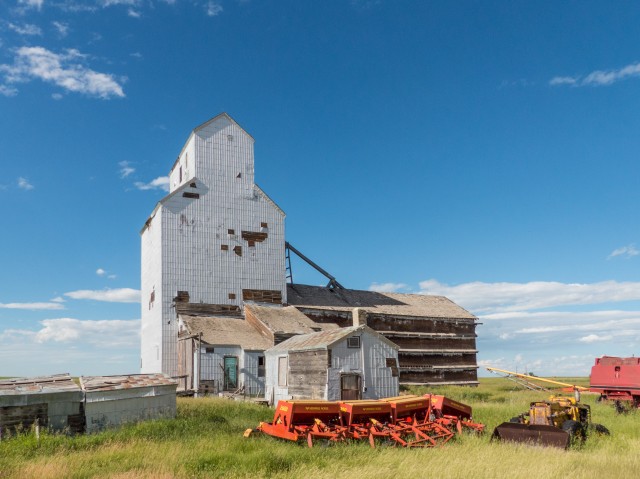
The last Ogilvie Flour Mills Company grain elevator in Alberta.
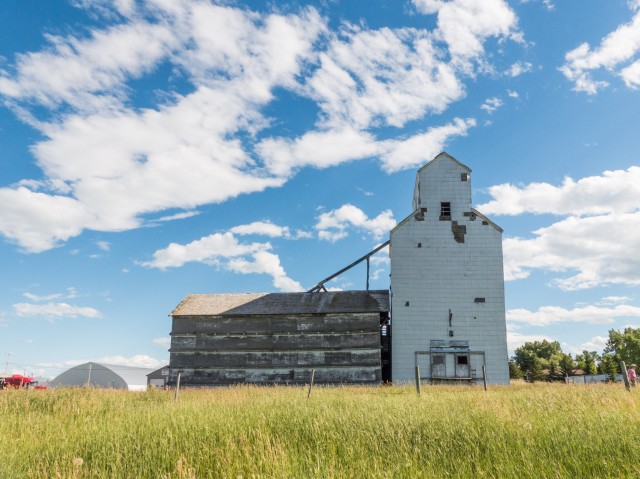
The structure is located in Wrentham and was built in 1925.
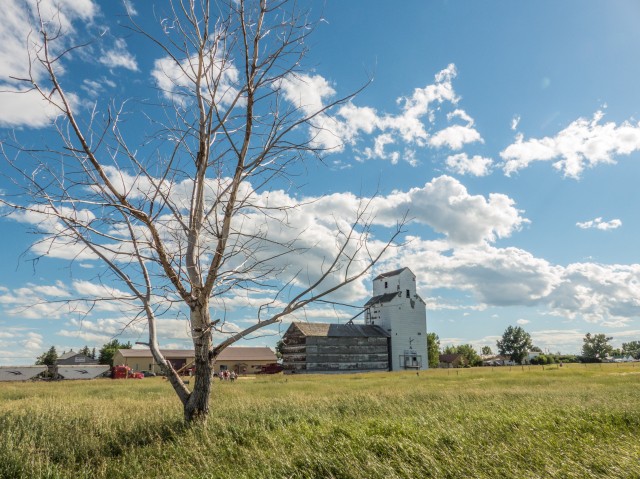
In the early 1960s, it became an Alberta Wheat Pool facility.
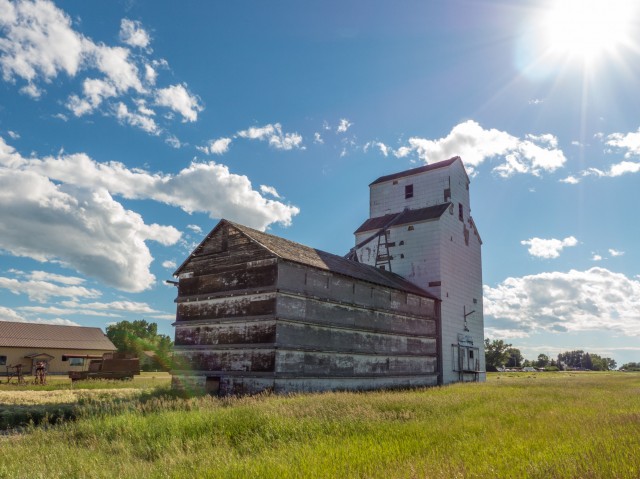
In the late 1960s it was sold to a local farmer.
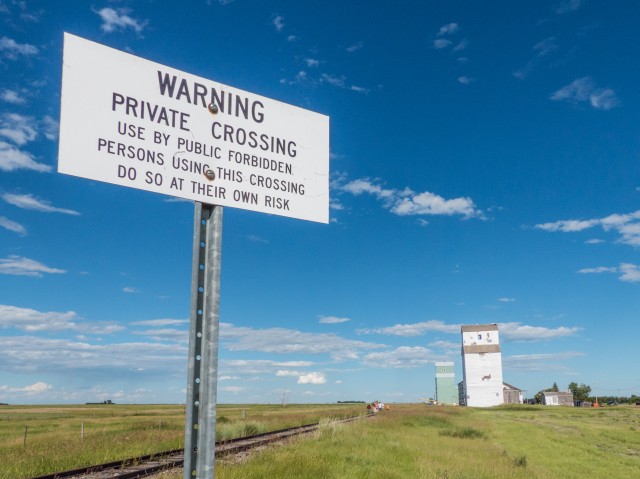
The track in front has not been used for many years.
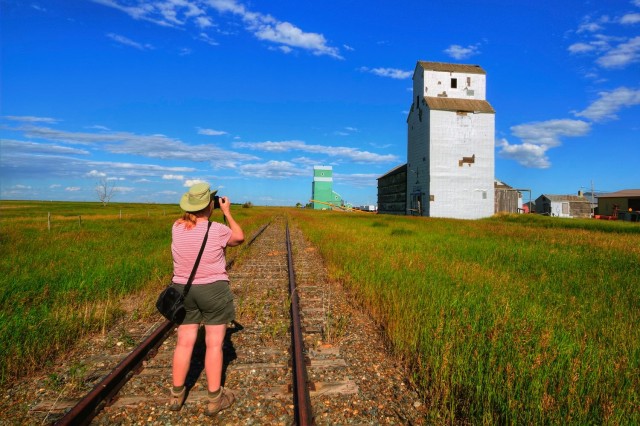
Wrentham actually has two grain elevators, as you can see. Photo by Allan Arconada.
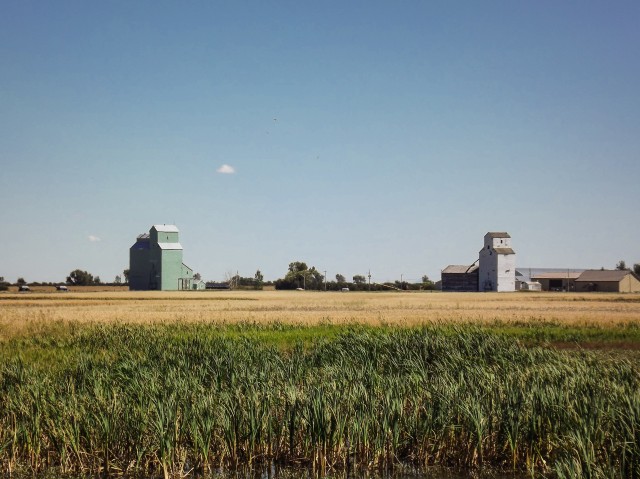
The structure on left was built in the 1960s. Photo by Jason Paul Sailer.
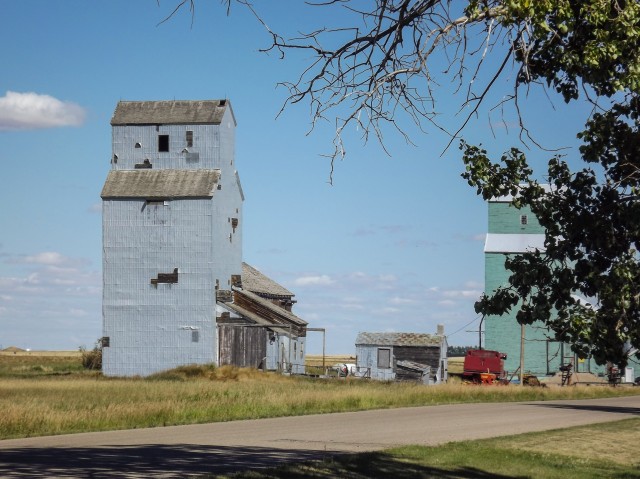
A group is working to save the historic structure. Photo by Jason Paul Sailer.
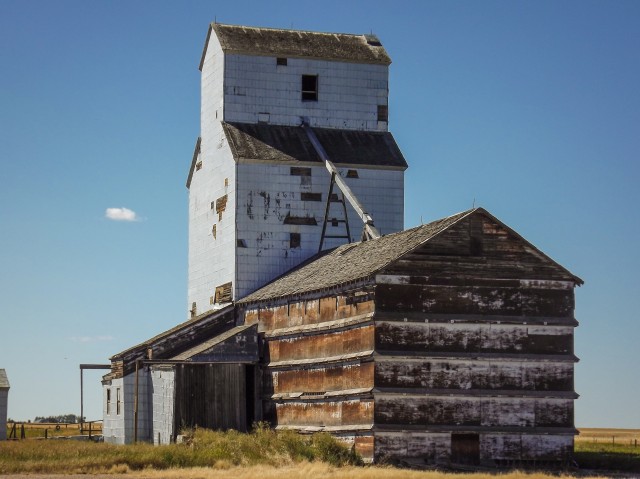
Parts of the faded Ogilvie sign can be seen from this angle. Photo by Jason Paul Sailer.
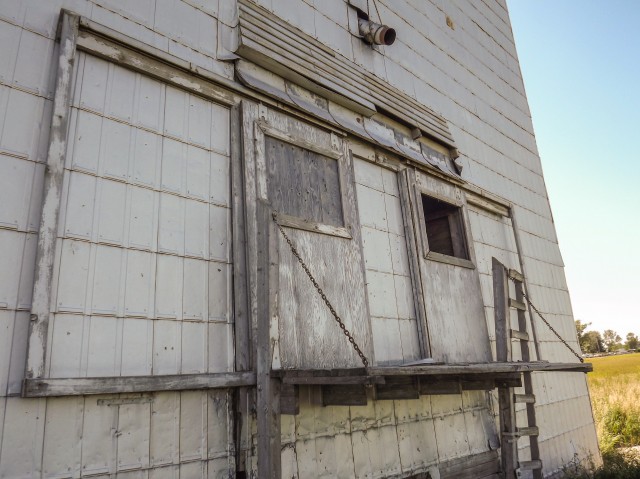
Metal sheathing was a fire prevention measure. Photo by Jason Paul Sailer.
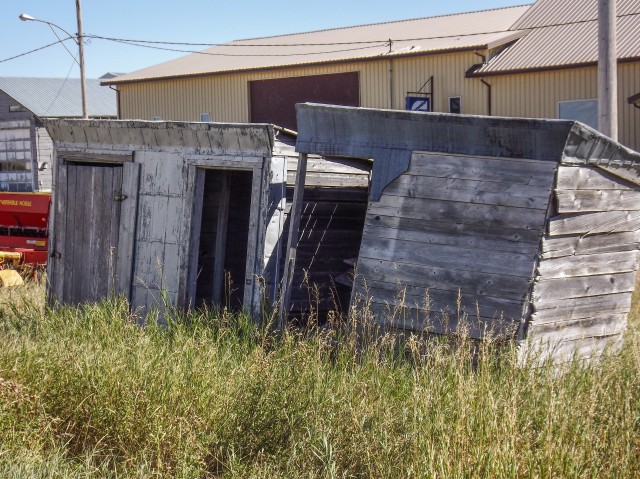
The biffy and a storage building. Photo by Jason Paul Sailer.
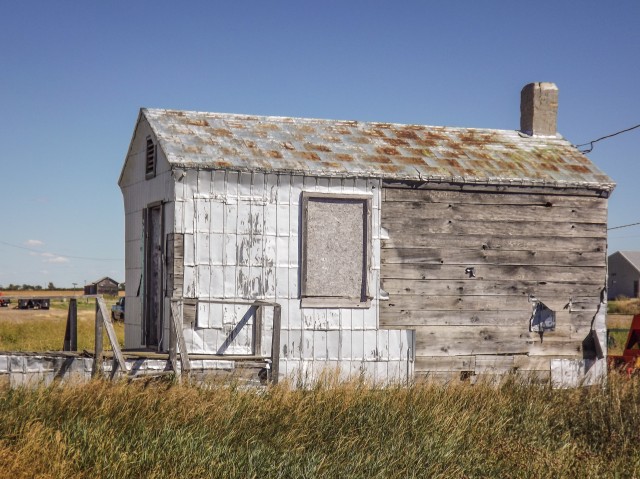
The grain elevator office. Photo by Jason Paul Sailer.
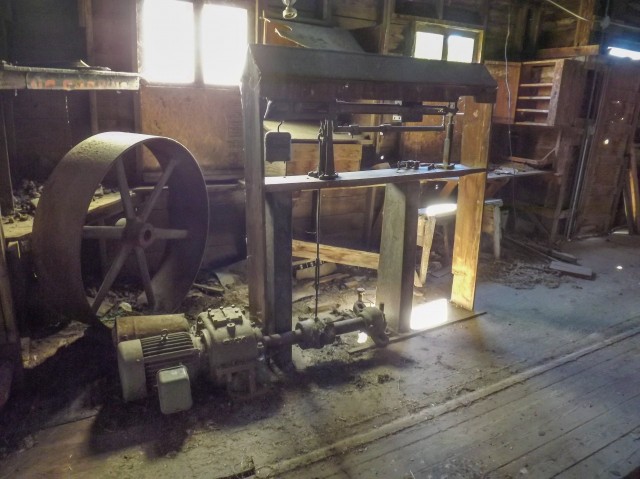
The scale and odd bits of machinery. Photo by Jason Paul Sailer.
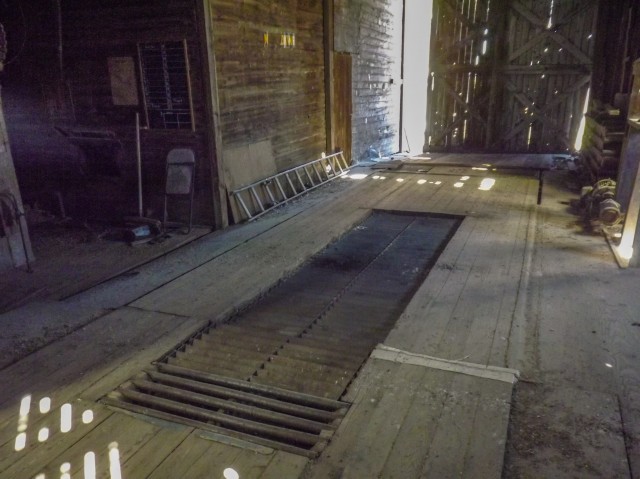
The unloading platform. Photo by Jason Paul Sailer.
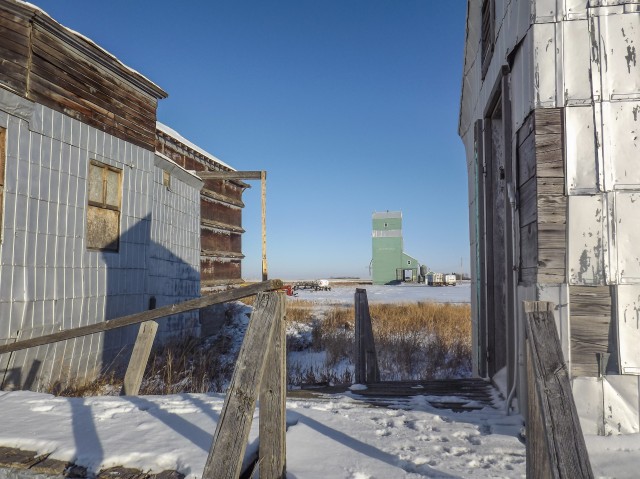
The view on a cold winter’s day. Photo by Jason Paul Sailer.

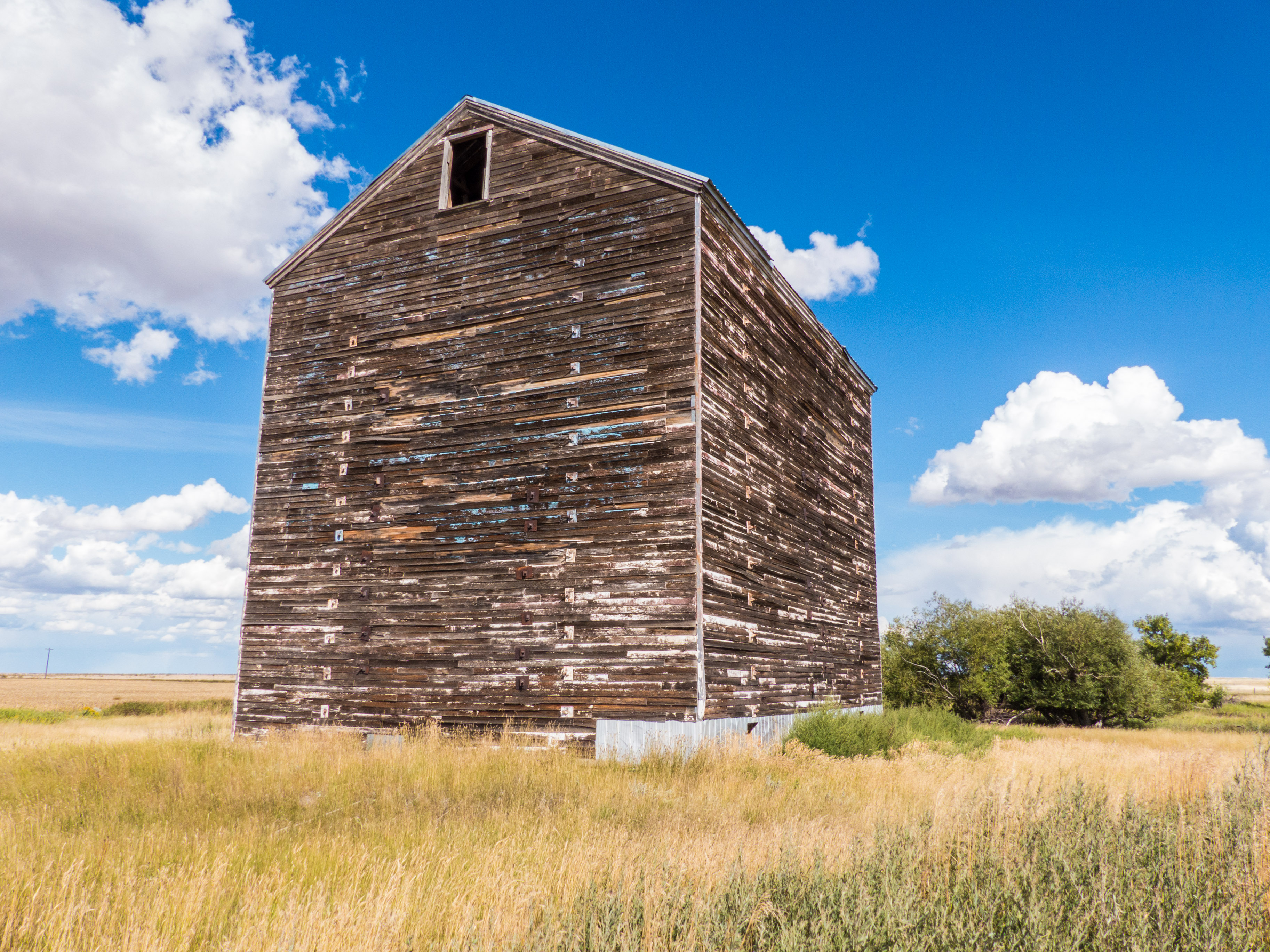
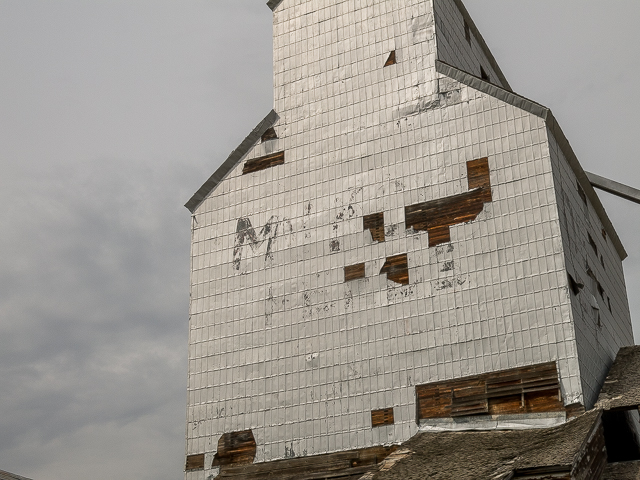
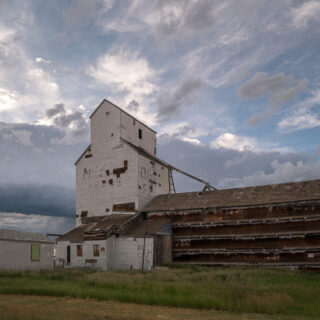
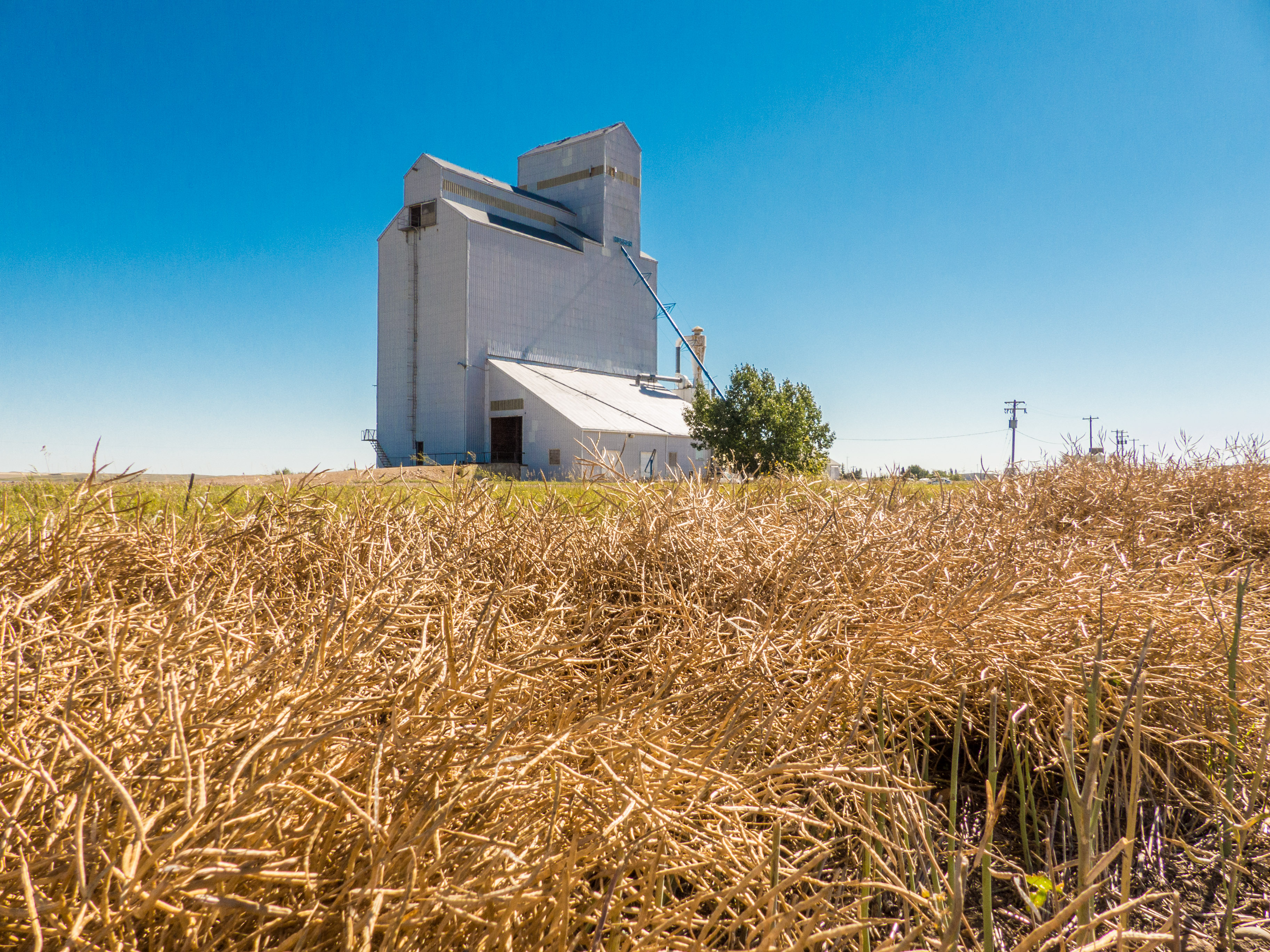
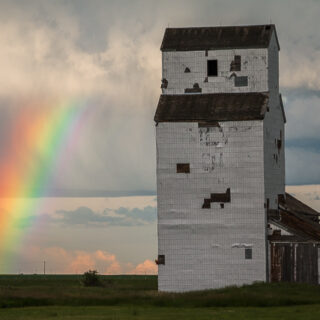

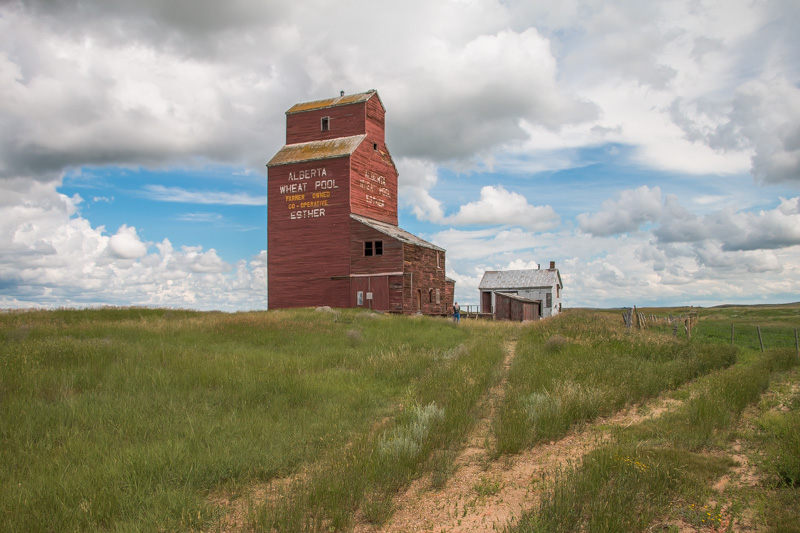
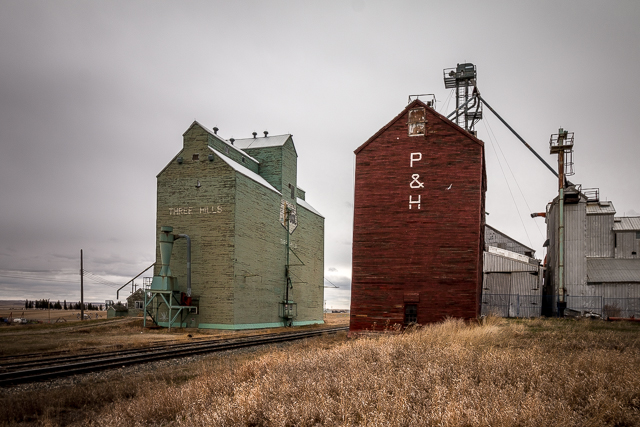
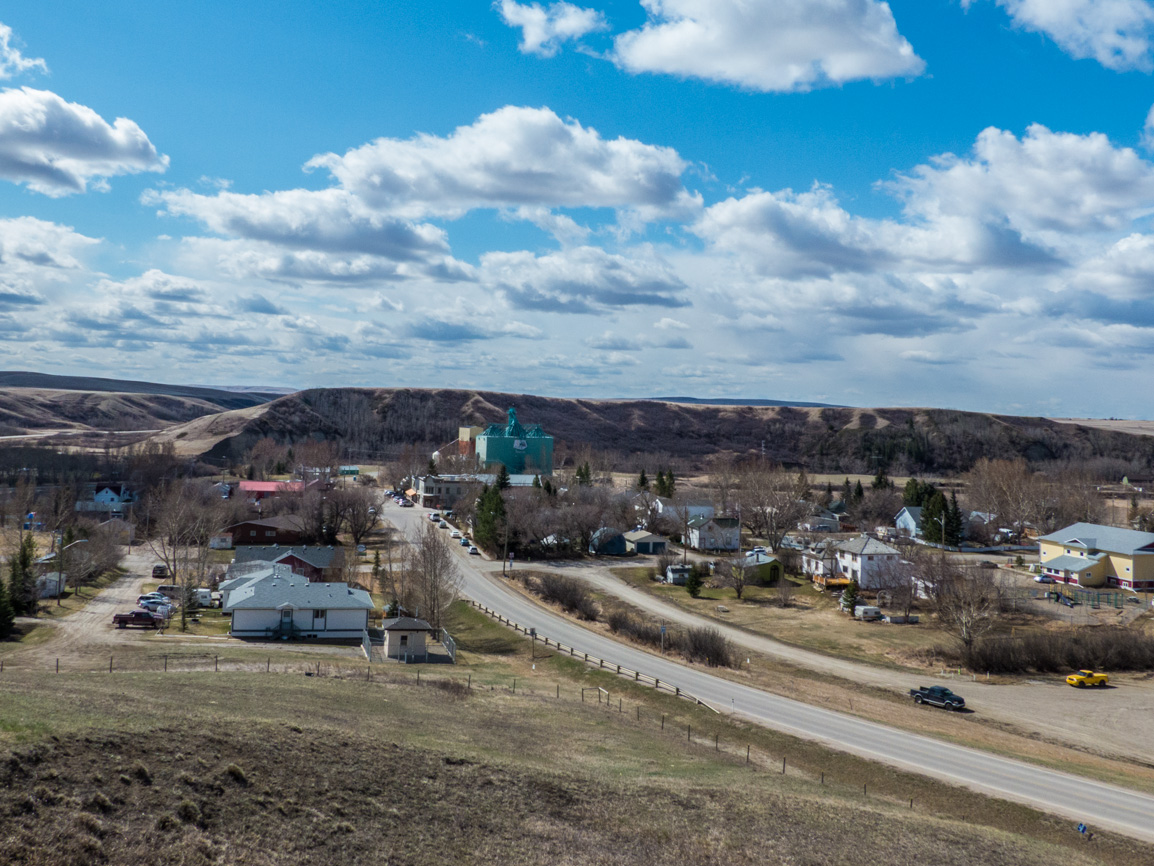
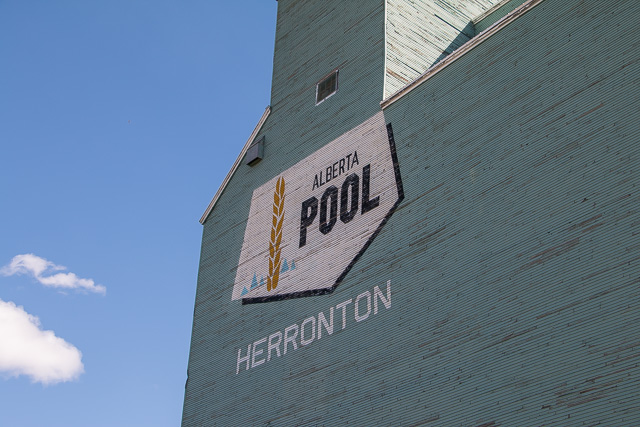
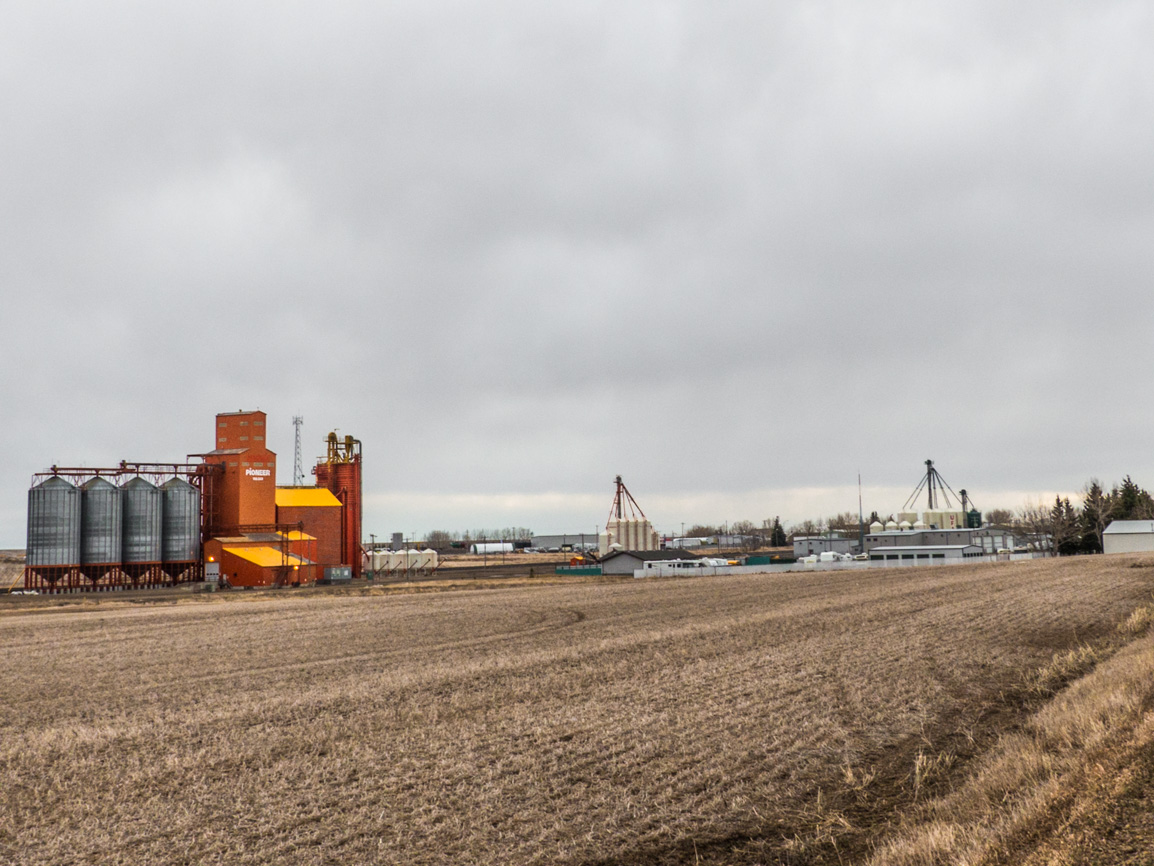
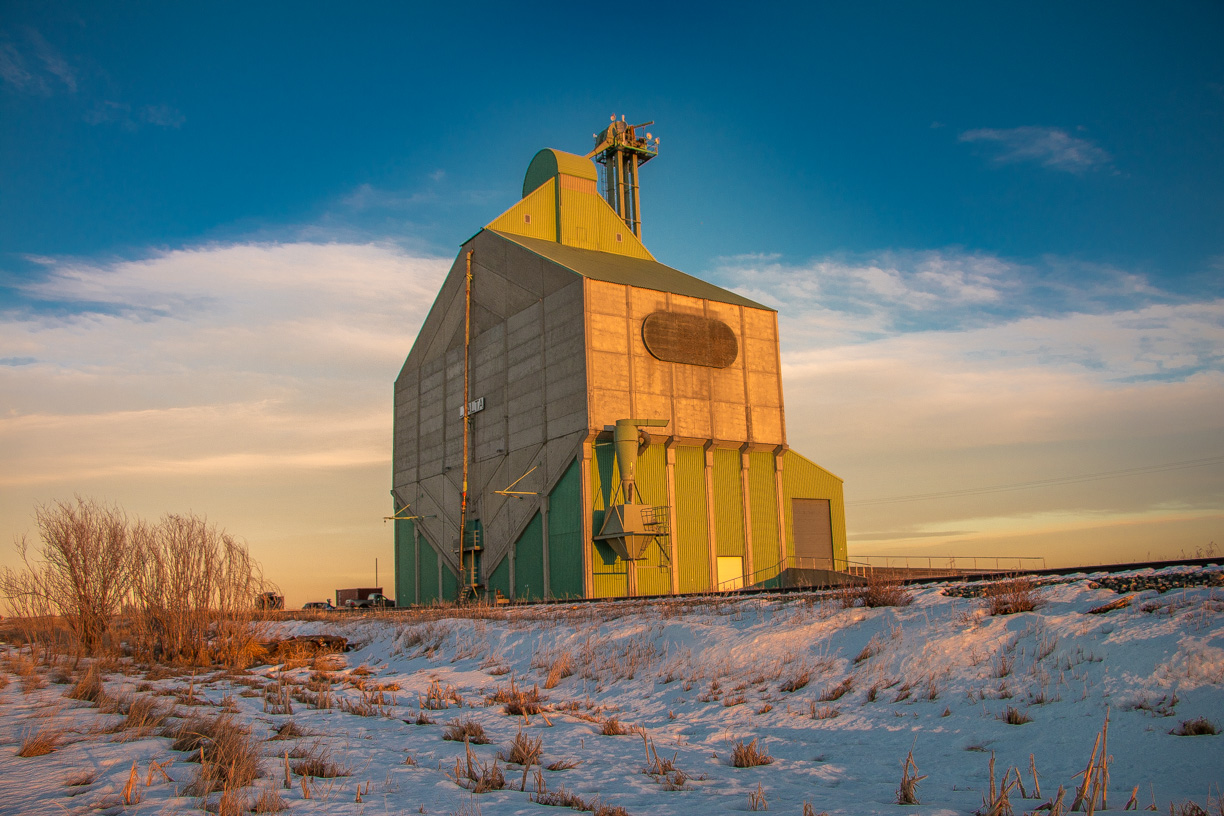
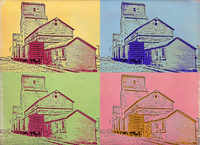






I Was employed at the Ogilve Flour Mills, in
Montreal, for 30 years.
I have a few articles with the Ogilvie name
and I was wondering if I could mail them out
to the Historic society.
please let me know where i can send them to.
Doris Daly l’Ecuyer
Thank you Doris, I’ll send you a private message.
I loved this post. You say it very well. Grain elevators were once all around us and many people don’t know it’s our history! I could not leave your web site and spent hours reading story after story. Good work!
You are right, it’s amazing how many people don’t know the history around all those grain elevators that once dotted the prairies.
I was born and raised in New Norway Alberta and they had three elevators there at one time. Very nice pictures.
Wow, I’d love to hear your stories of growing up in that town.
Chris risked sun and clouds of mosquito’s to get some of these great shots
Nice work very well written and captured. We wish you luck in saving this fine old elevator.
Thank you, and be sure to donate!
That’s a well written and informative article.
Thanks, we hope it helps the cause.
Awesome post Chris! Glad you could come with us to enjoy it!
Glad you like it. To quote Arnie, “we’ll be back”.